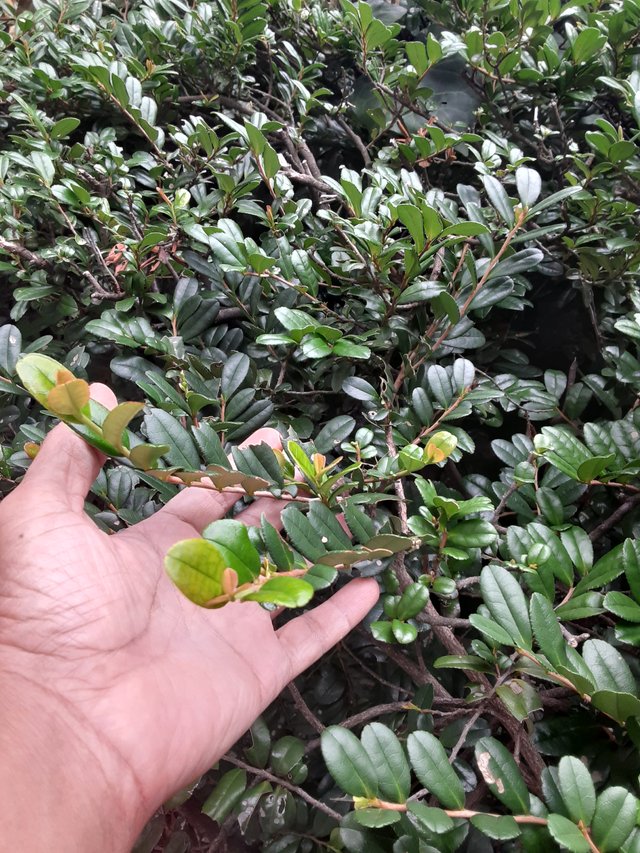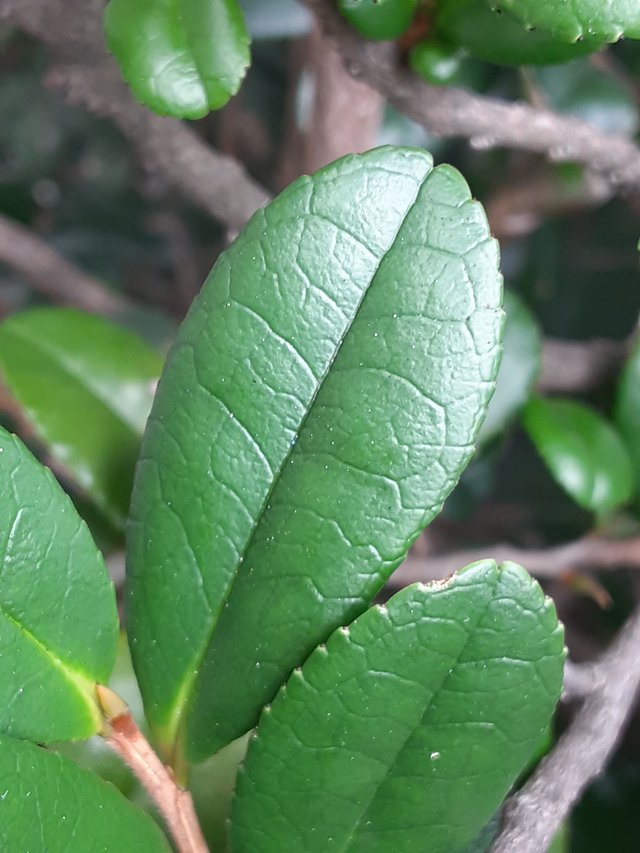
Eurya emarginata, commonly known as Hamahisakaki in Japanese, is an evergreen shrub or small tree native to East Asia, particularly Japan and Korea. It's a member of the Camellia family and is often found in coastal areas, thriving in sandy, well-drained soils.
One of the most distinctive features of this plant is its leaves. They are leathery, glossy, and a deep, rich green color. The leaf blades are oblong-oval in shape and have a characteristic notched tip, which is where the species name "emarginata" comes from. The margins of the leaves are finely serrated, adding to their textured appearance.

These leaves are adapted to the harsh coastal environment. Their thick, leathery texture helps to retain moisture and protect against salt spray. The glossy surface also helps to reflect sunlight, preventing the leaves from overheating. In autumn and winter, the leaves remain green and retain their vibrant color, providing a welcome splash of color during the colder months.
Beyond their aesthetic appeal, the leaves of Eurya emarginata play a vital role in the plant's survival. They are the primary site of photosynthesis, the process by which the plant produces its own food using sunlight, water, and carbon dioxide. The leaves also help to regulate the plant's water balance, ensuring that it has enough moisture to thrive.
Ref.:
 |  |
Upvoted! Thank you for supporting witness @jswit.
Downvoting a post can decrease pending rewards and make it less visible. Common reasons:
Submit
You've got a free upvote from witness fuli.
Peace & Love!
Downvoting a post can decrease pending rewards and make it less visible. Common reasons:
Submit